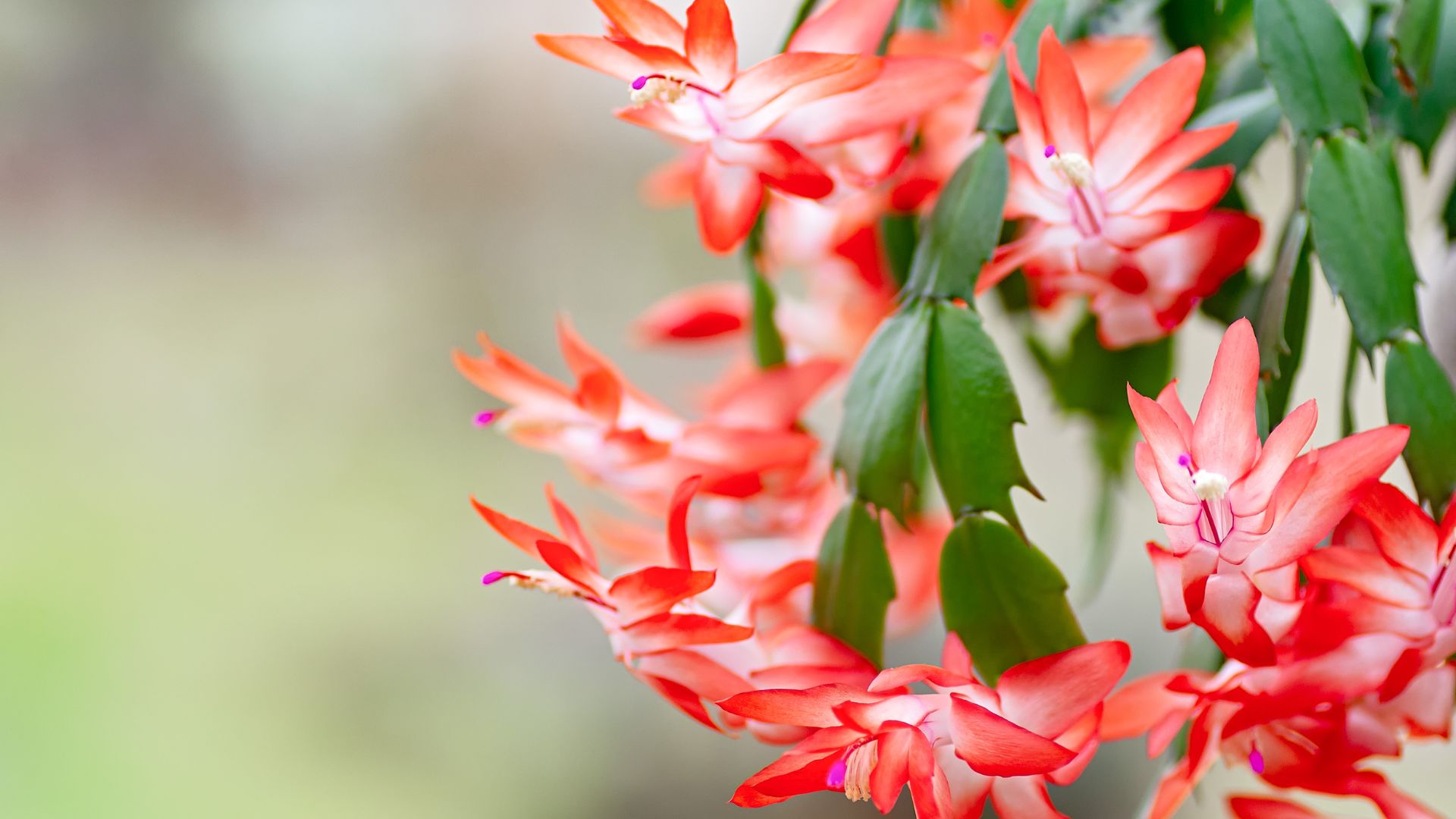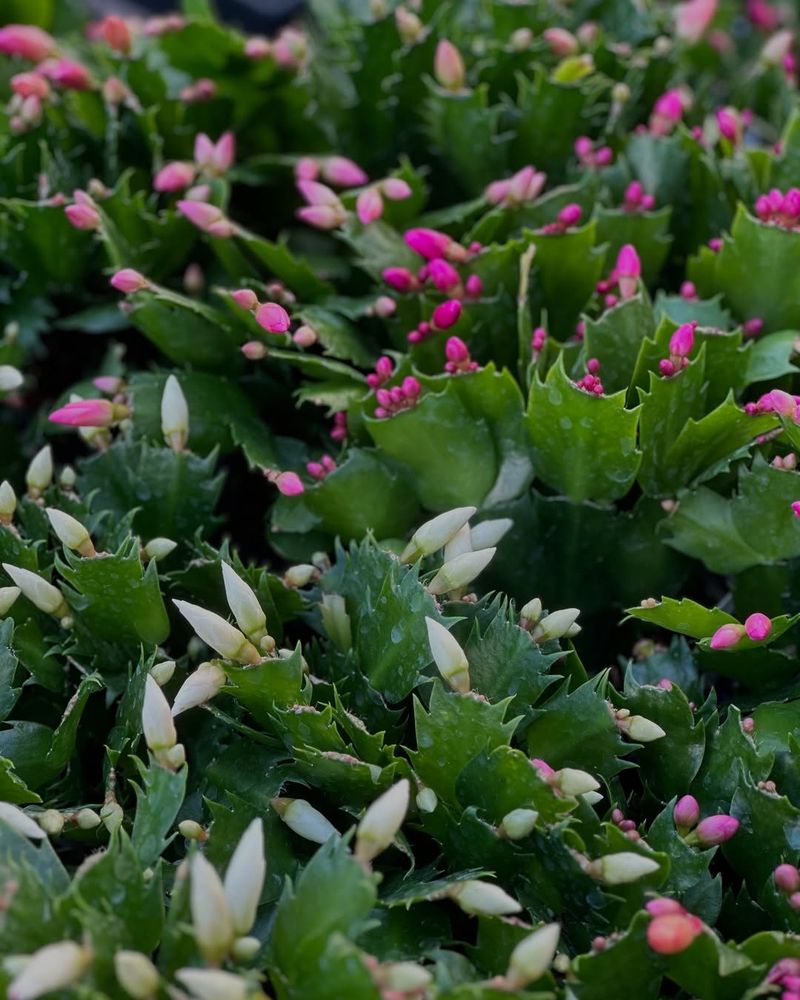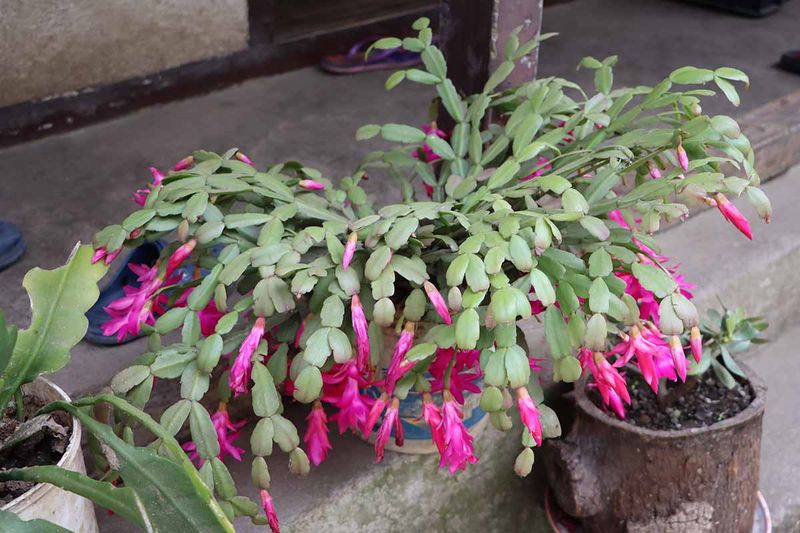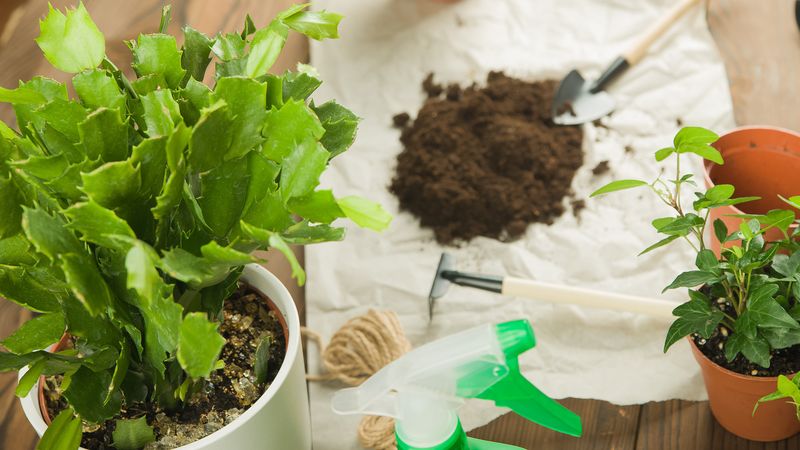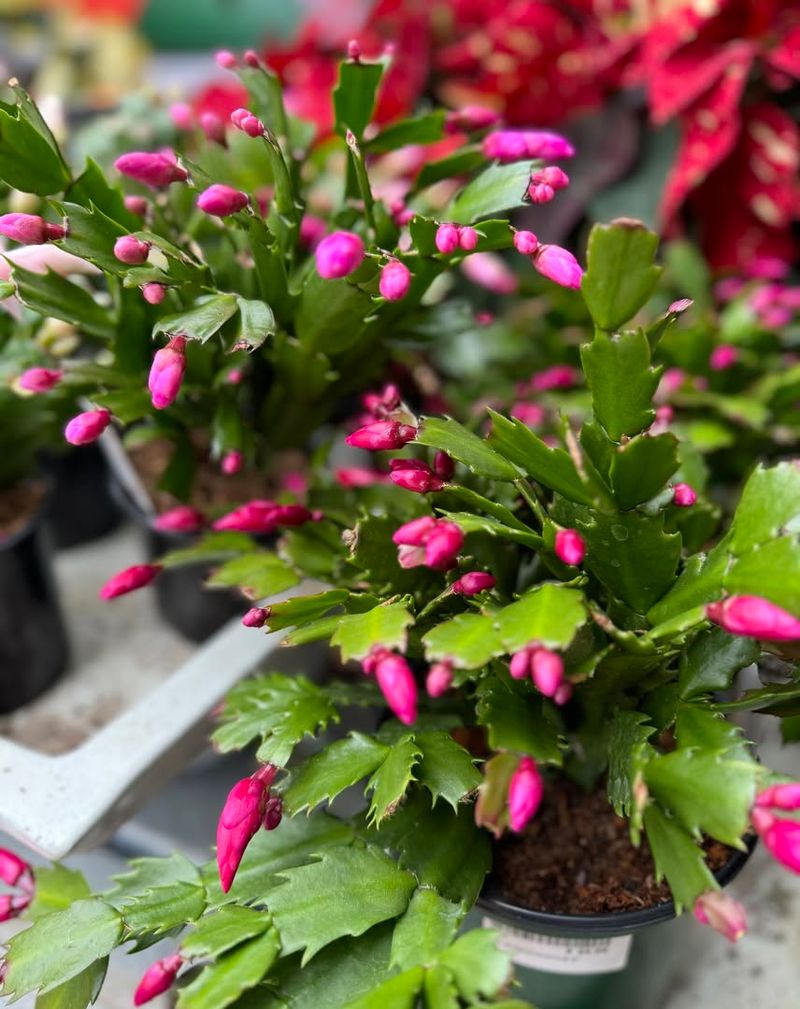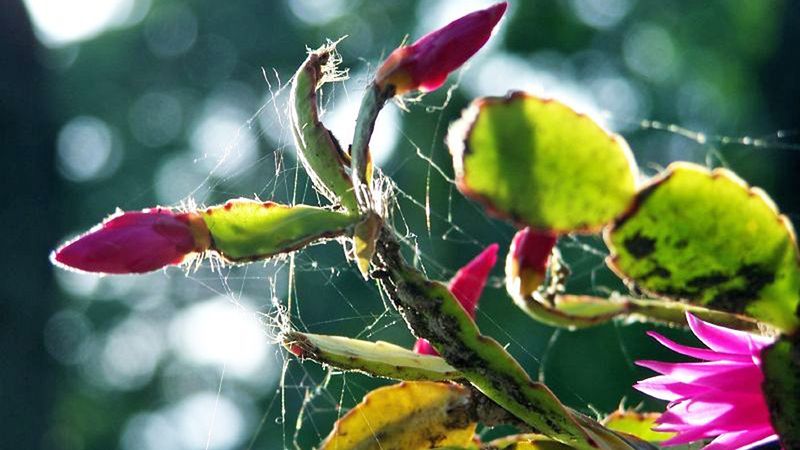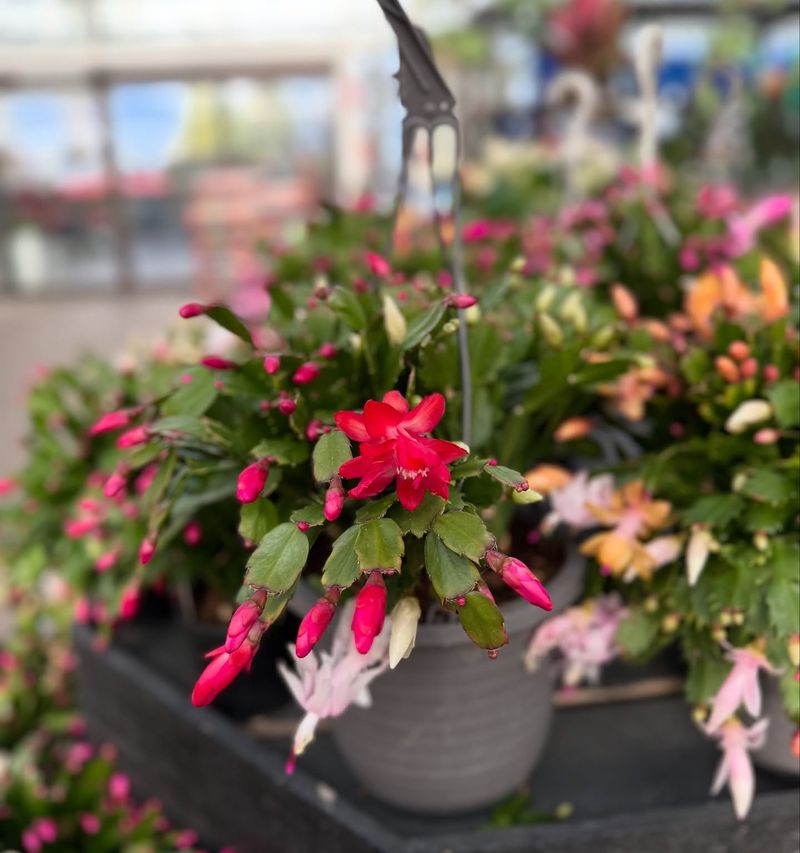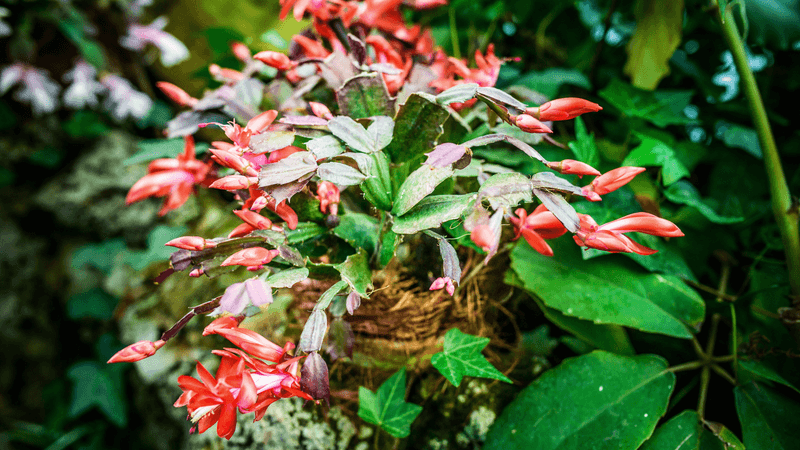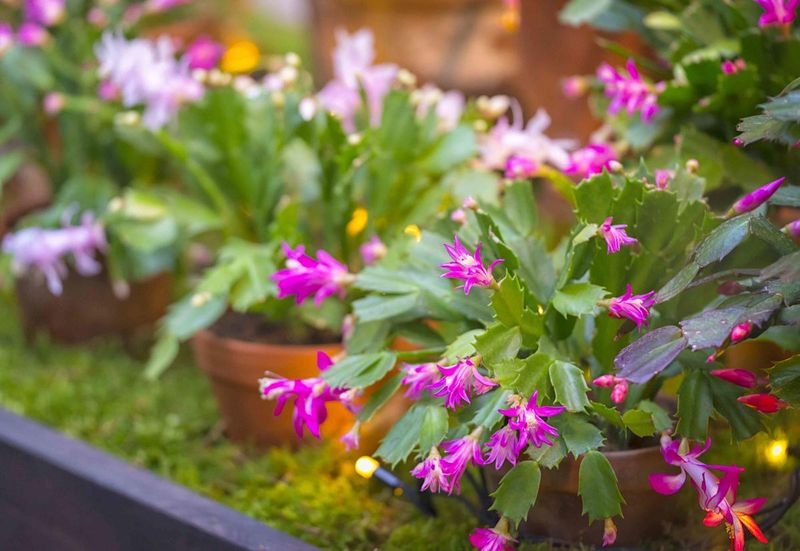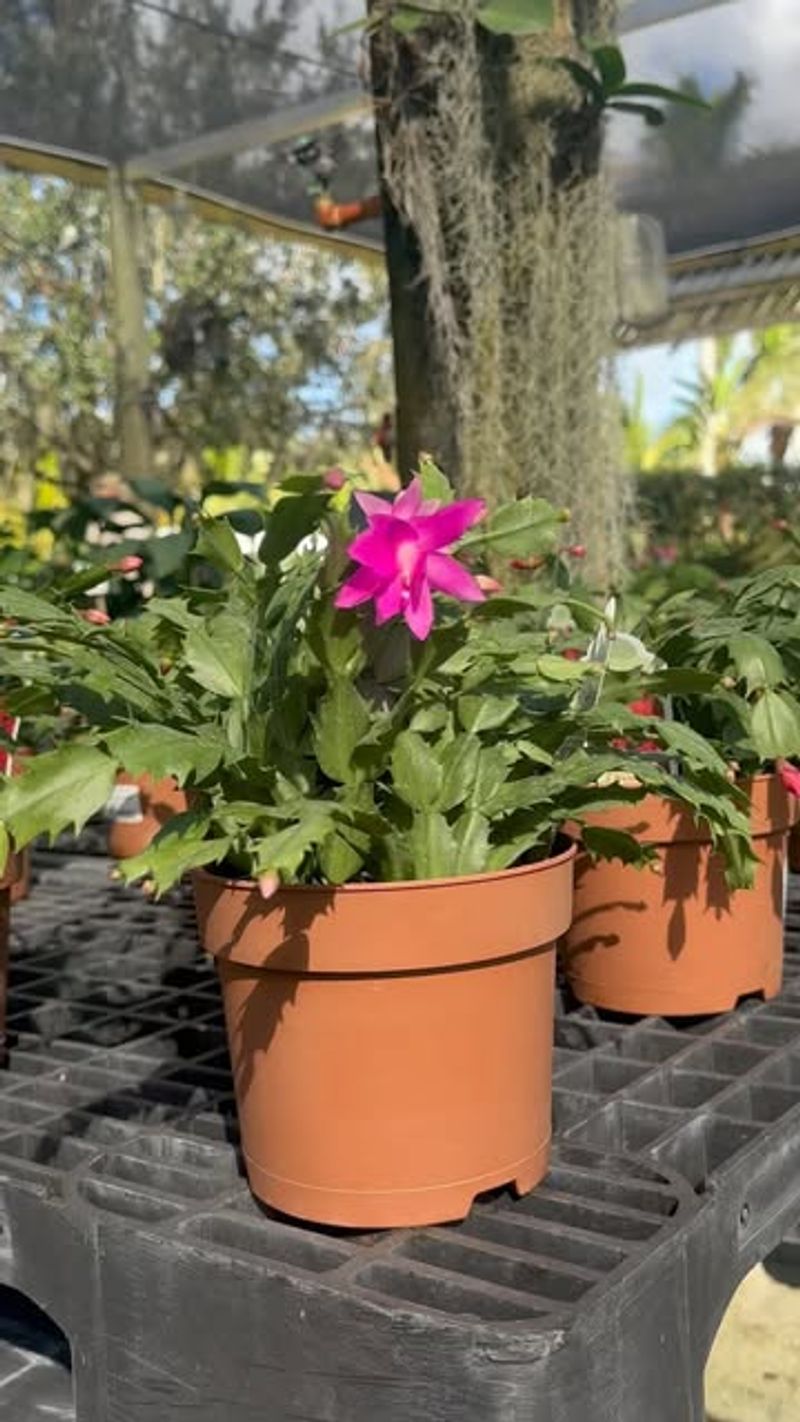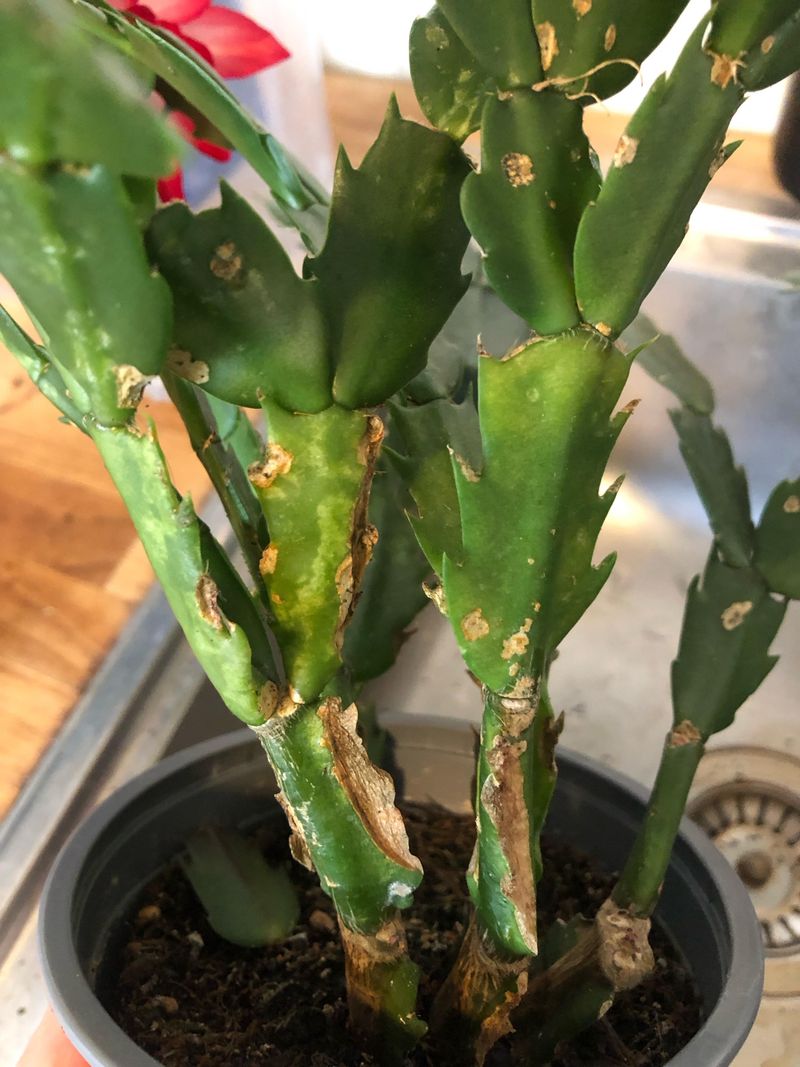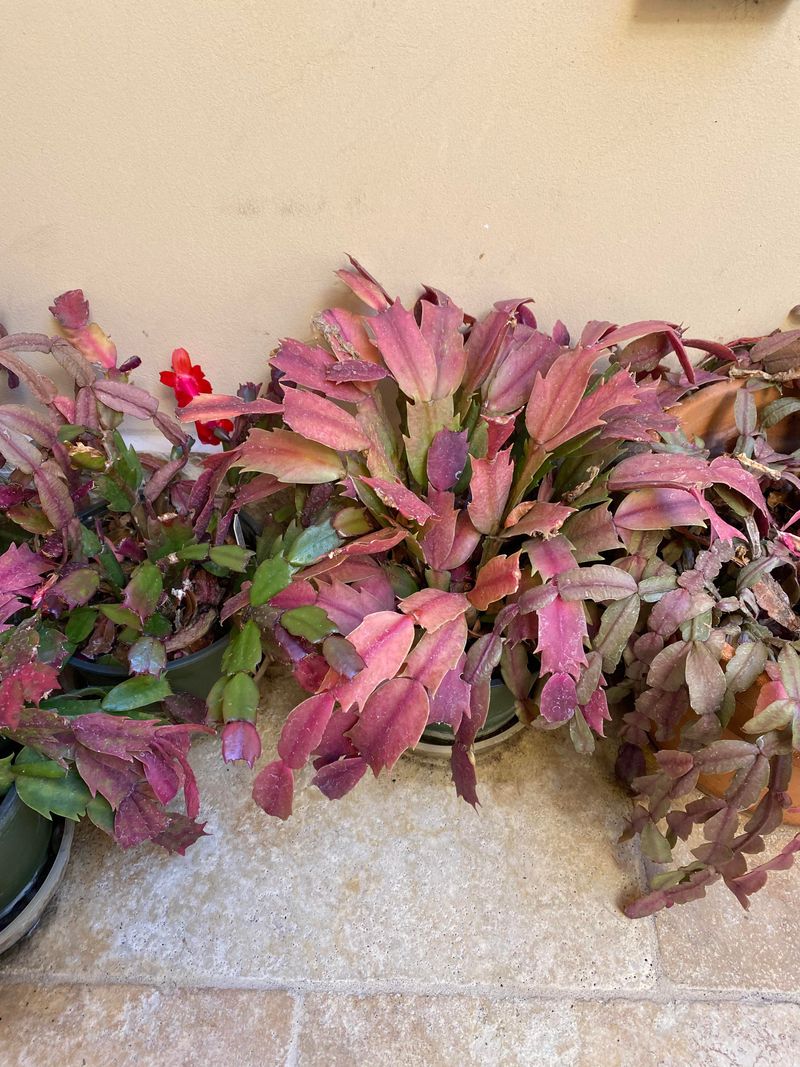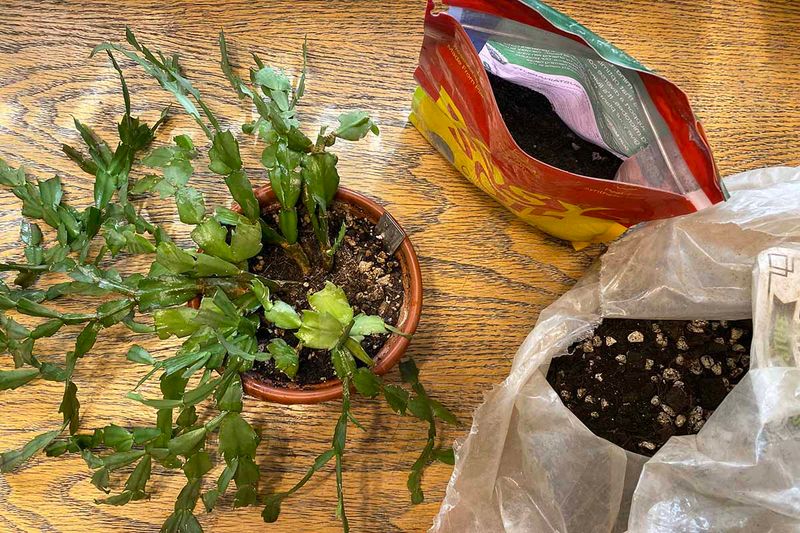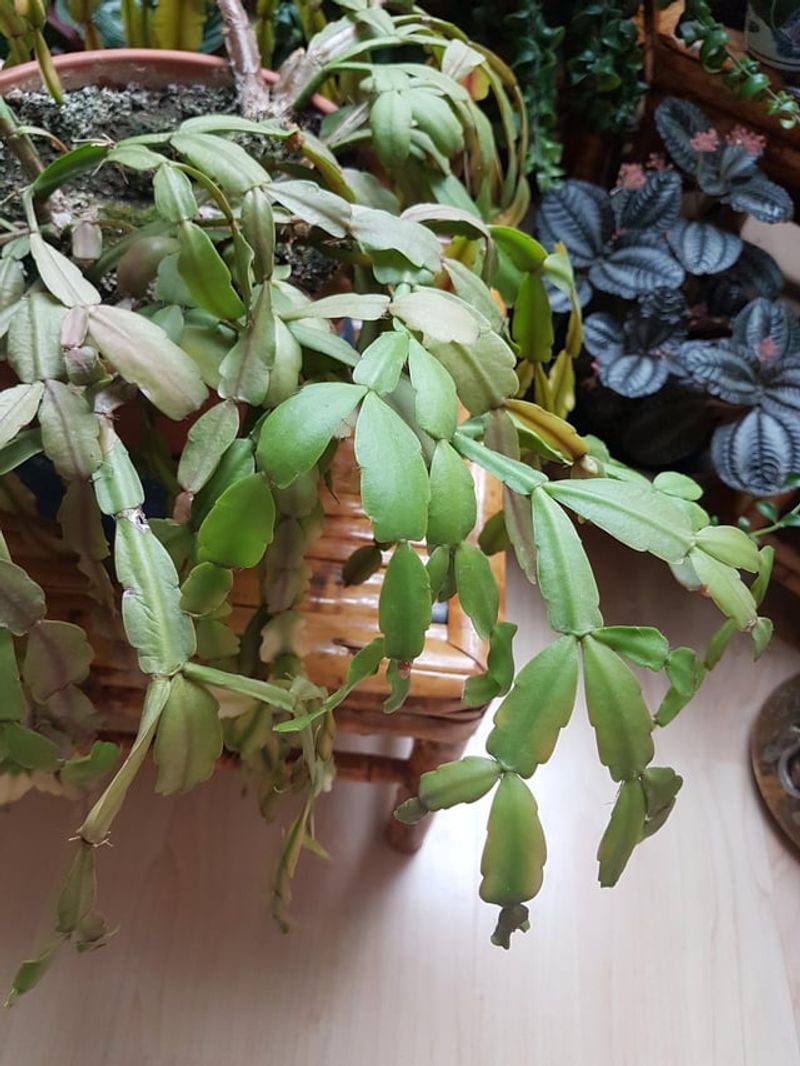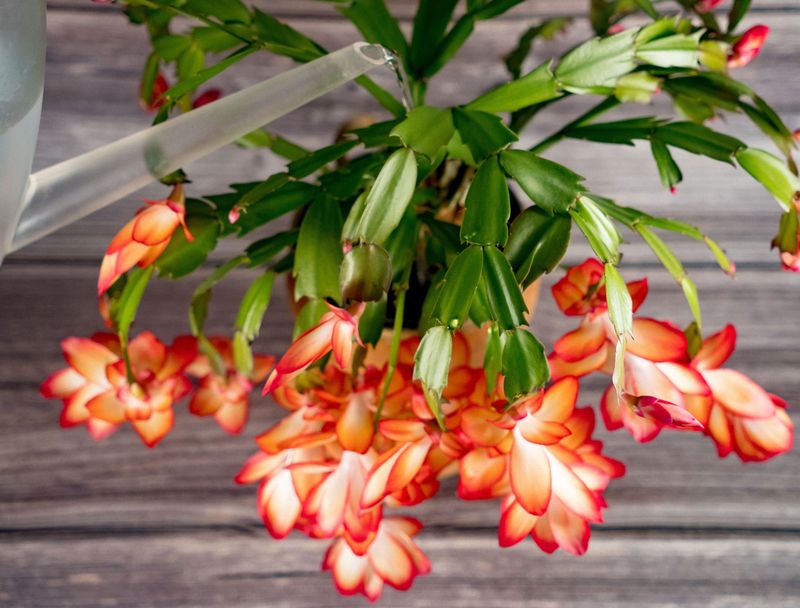Giving your Christmas cactus a little outdoor vacation can really perk it up, but timing and placement are everything. I’ve made the mistake of rushing mine into full sun—don’t do that unless you want scorched leaves. It’s also easy to forget that Christmas cactus hates soggy roots.
Outdoor rain and overwatering can quickly lead to rot if you’re not using a well-draining container. I always make sure mine sits under a covered patio so it gets the air circulation without the downpour.
And don’t skip the bug check! Outdoor stays can invite unwanted guests like aphids or mealybugs. I give mine a good once-over before bringing it back inside, especially if I want to see those iconic blooms later in the year.
1. Skipping The Hardening-Off Process
Your indoor Christmas cactus can’t handle direct outdoor conditions immediately. Plants need gradual adjustment to new environments, just like we need time to adjust to temperature changes.
Start by placing your cactus outdoors for just an hour, then gradually increase exposure over 7-10 days. I learned this lesson when my thriving cactus developed sunburn patches after a sudden move outside.
This slow transition helps the plant build tolerance to wind, temperature fluctuations, and different light levels without shocking its system.
2. Exposing To Direct Sunlight
Christmas cacti naturally grow under tree canopies in Brazil, not in full desert sun. Direct sunlight quickly burns their delicate segments, causing irreversible damage that appears as bleached or brown patches.
Choose a spot with dappled shade or morning sun only. My neighbor’s cactus thrived under her porch overhang where it received gentle filtered light throughout the day.
Remember that outdoor light is much more intense than indoor light, even on cloudy days, so err on the side of more shade.
3. Forgetting To Check Night Temperatures
Many gardeners monitor daytime temperatures but overlook nighttime drops. Christmas cacti can suffer damage when temperatures fall below 50°F, even if days are warm.
Keep a digital min/max thermometer near your plant to track overnight lows. Last summer, I nearly lost a prized cactus when an unexpected cold front moved through in late August.
Bring plants inside whenever nighttime temperatures threaten to drop below 50°F, even if it means disrupting your outdoor schedule.
4. Using The Wrong Pot Outdoors
Terracotta pots dry out quickly outdoors, while plastic retains too much moisture during summer rains. Both scenarios stress your Christmas cactus in different ways.
Choose glazed ceramic pots with drainage holes for outdoor placement. These maintain more consistent moisture levels while allowing excess water to escape.
I switched to a heavy glazed pot after watching my cactus struggle in terracotta during a hot spell. The weight also prevents tipping during summer storms, which saved my plant during last year’s windy season.
5. Watering On The Same Schedule As Indoors
Outdoor conditions change your cactus’s water needs dramatically. Wind, humidity, and temperature fluctuations mean your indoor watering routine no longer applies.
Check soil moisture every 2-3 days by inserting your finger an inch deep. Only water when the top inch feels dry to the touch.
During a particularly humid week, I continued my indoor watering schedule and nearly rotted my cactus roots. The soil stayed soggy for days longer than it would have indoors, causing segments to turn mushy.
6. Ignoring Insect Visitors
Outdoor exposure introduces your Christmas cactus to a whole ecosystem of potential pests.
Aphids, mealybugs, and spider mites can quickly colonize your plant while it’s outside. Inspect the joints and undersides of segments weekly for tiny invaders. My most beautiful cactus developed a mealybug infestation that went unnoticed for weeks because I wasn’t checking regularly.
Keep insecticidal soap handy for immediate treatment, and consider a preventative neem oil application every few weeks during outdoor placement.
7. Placing In High-Traffic Areas
Christmas cacti have fragile, jointed segments that snap easily when bumped. Placing them near walkways, play areas, or where pets roam invites accidental damage.
Choose a sheltered location away from activity. The corner of my deck became the perfect spot after I lost several segments to my dog’s wagging tail when the plant was near the door.
Hanging baskets offer excellent protection from traffic while showcasing the plant’s cascading growth habit, though they require more frequent watering.
8. Forgetting To Adjust Fertilizer
Outdoor conditions often accelerate growth, but that doesn’t mean more fertilizer is better. Excess nutrients can burn roots and cause more harm than good.
Dilute your regular houseplant fertilizer to half strength and apply monthly during the growing season. Stop completely by late summer to prepare for bloom formation.
When I over-fertilized my outdoor cactus, the segments grew rapidly but became thin and weak. It took months to recover its normal growth pattern after I corrected my mistake.
9. Neglecting Wind Protection
Wind damages Christmas cacti more than many realize. Their segmented stems catch breezes like sails, causing breakage and stress that stunts growth and flowering.
Create windbreaks using larger plants, decorative screens, or strategic placement against walls. My eastern patio corner provides perfect protection while still allowing morning light.
After losing several segments during a stormy week, I started using small bamboo stakes and soft plant ties to support larger plants when weather forecasts predicted windy conditions.
10. Bringing Indoors Too Late
Many gardeners wait until the first frost warning before bringing Christmas cacti indoors. This timing is too late for these sensitive tropical plants that need gradual reacclimation.
Plan to move your cactus inside when night temperatures consistently drop below 55°F, usually 3-4 weeks before your first frost date. This gives the plant time to adjust before bloom initiation.
My aunt waited until October to bring hers in last year, and it dropped all its developing buds from the sudden environmental change.
11. Skipping The Pest Inspection
Bringing outdoor insects into your home can create lasting problems. Many gardeners rush the transition indoors without properly checking their plants.
Before moving inside, isolate your cactus and thoroughly inspect all segments with a magnifying glass. Treat any suspicious spots with insecticidal soap and quarantine for 1-2 weeks.
I once skipped this step and introduced spider mites to my indoor collection. The tiny hitchhikers spread to neighboring plants before I noticed them, creating months of treatment headaches.
12. Changing Pot Orientation
Christmas cacti develop a preference for their light source, growing toward it over time. Rotating their position disrupts this adaptation and stresses the plant.
Mark one side of your pot before moving outdoors and maintain the same orientation relative to the sun. Use a permanent marker on the bottom of the pot as a simple guide.
After repositioning my large cactus during cleaning last summer, it dropped several healthy segments. Now I make small alignment marks to ensure consistent positioning during moves.
13. Rushing The Repotting Process
Moving outdoors and repotting simultaneously overwhelms Christmas cacti. The double stress often leads to dropped segments and delayed recovery.
Repot at least two weeks before moving outdoors or wait until the plant has been outside for a month. This spacing allows the plant to manage one stress at a time.
My grandmother’s 30-year-old cactus nearly died when she repotted it the same day she moved it outside. Now she follows a careful calendar that separates these activities by several weeks.
14. Ignoring Rain Forecasts
Outdoor Christmas cacti can quickly become waterlogged during heavy rainstorms. Excess water leads to root rot and fungal problems that are difficult to reverse.
Monitor weather forecasts and move plants to covered areas before heavy rain. I created a simple plant shelf under my eaves where cacti can still get light but remain protected from downpours.
After losing a beautiful plant to root rot following three days of spring rain, I now use weather apps with rain alerts specifically for my outdoor plant care schedule.
15. Forgetting About Humidity Needs
Christmas cacti originate from humid Brazilian forests, not dry deserts. Outdoor air, especially in arid climates, can be much drier than your home environment.
Group plants together to create humidity pockets or place containers on trays of wet pebbles that don’t touch the pot bottom. During especially dry periods, mist the air around plants in the morning.
When I moved to a drier climate, my cacti developed crispy edges until I created a humidity zone with neighboring ferns and regular misting.

